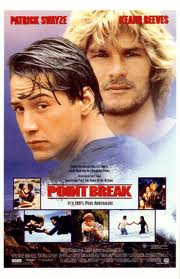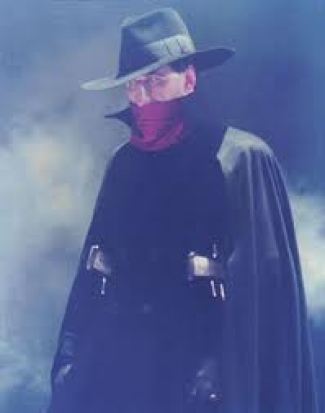Hello, I’m a Catholic who hardly ever likes anything, especially popular movies. I’m also Jewish with an established history of calling out antisemitism in the Church. Want to hear what I think about Mel Gilbon’s 2004 film The Passion of the Christ?
Here, I will focus on two criticisms: Its ultra violence, and its antisemitism; and why I think it’s worth watching.
It it gratuitously violent?
Yes and no. No doubt some viewers reveled in the sadistic violence and graphic gore; but I’m also quite sure others came for the gore and saw more than they bargained for. But I don’t think the violence was just a hook to trick gore-happy viewers into an edifying movie. It was also a way to express how unanswerably outrageous the crucifixion, the murder of God, really was.
Gibson is far from the first to depict the passion and death of Jesus in grotesquely heightened terms, because if we have a hard time grasping the spiritual horror of what happened, we can at least feel the corporeal horror, and go from there. It’s not necessary to depict the crucifixion this graphically, but it’s not illegitimate or inherently inappropriate; and it does have a purpose other than to feed viewer’s blood lust.
For instance: After the notorious interminable scourging scene comes a heart-stopping aerial view of Jesus’ blood splattered all over the courtyard. An impossible amount of blood. Pilate’s wife comes out with a stack of fresh linens and tremblingly offers them to Mary and Mary Magdalene, and the two climb down on their knees and begin to carefully mop up every drop. An impossible task. That scene is responsible for a permanent change in my thinking, transforming the phrase “precious blood” from a pious nicety into a central reality that changed how I approach the Eucharist.
The violence may simply be too much for many viewers. But I didn’t see any violence that was there simply for the sake of showing violence. It was an ordeal to watch, and it was supposed to be.
Is the movie antisemitic?
No, but actually yes. Yes and no. Mostly. . . . (heaven help me) no.
Mel Gibson assuredly is antisemitic. After an outcry, he did cut a “blood oath” scene from the original version; but declined to meet with the ADL, basically saying: Look, I hope you get over this not-being-Catholic thing someday. Newsflash: The man is an asshole. But my policy is to evaluate works of art on their own merits as much as I can.
Most accusations of antisemitism in the movie seem to fall into two categories: Things that were probably intentional, but which the average viewer (which I am) wouldn’t pick up on; and things which you can interpret according to your own baggage.
In the first category, intentional but missable, includes details like the sign on the cross. Sr. Rose Pacatte at NRO says:
That Gibson was making a conscious choice to reject and negate Judaism is indisputable when we see the sign on the cross. “Jesus of Nazareth, King of the Jews” is written only in ecclesial Latin and Aramaic. He rejects the Greek as detailed in John 19:20, and Greek was the common language of the Roman Empire at that time. Thus, according to Adlerstein, Gibson creates “a tension between Aramaic/Hebrew; he does not create a bond but severs it.”
and
One [viewer] mentioned the tear that fell from the cross and the earthquake, which is significant because the scene shows the destruction of the temple at the time of Jesus’ death, but the destruction did not happen until A.D. 70. According to Gomez, this scene points to a “replacement theology,” upholding the mistaken medieval idea that Christianity (Ecclesia) has replaced Judaism (Synagoga). The brokenness visible in the temple evokes the brokenness of Synagoga. In other words, it’s a “dig” at Judaism that does not appear to be there by accident.
I just plain didn’t notice the historical discrepancies, so if these details were attempts at antisemitism — or at least, attempts to elicit antisemitism in the viewer — they failed.
It’s harder to deny that Gibson portrays the Jews using offensive stereotypes, and shows the apostles as some sort of “high Jews” or “white Jews” by portraying them as separate from the others.
But . . . the Jews who crucified Jesus were the bad guys, and the ones who didn’t betray him did make themselves separate. I understand the dangers of feeding stereotypes, but how is a moviemaker supposed to portray evil without signaling to the viewer that it is evil? You tell me. The High Priests were concerned mainly with retaining power; Judas did sell out Jesus for money; the Jews who insisted on Jesus’ execution did reduce their faith to a bunch of ritualistic formalities which were threatened by his new commandment. These evils portrayed are what Jesus came to get rid of. To refuse to depict them would be to refuse to depict what actually happened. There isn’t a lot of nuance in character among the Jews who condemned Jesus because it’s not that kind of movie. The good guys don’t show a lot of nuance, either.
The question is, does the movie say “These men did something evil” or “These Jews did evil Jew things”? This is why I say it depends what you bring to the movie. If you’re an antisemite and you want to know why Jesus had to die, you’ll see that the Jews killed him because Jews are bad. If you’re not an antisemite and you want to know why Jesus had to die, you’ll see what kind of people rejected Jesus: Those who want power. Those who want money. Those who value order over truth. Those who are cowards. Those who are cruel.
So Mel Gibson and his pals may be saying, “This is what Jews are like,” but I don’t think that’s what the movie is saying, unless you’re specifically looking to hear that message. It’s the same with the Gospels themselves. If you read the Gospels shallowly, you’ll think they’re a story about how the Jews betrayed Christ. God knows many have read the Gospels this way! But if you read the Gospels with an open heart, you’ll see it’s a story about how we all betrayed Christ. So the movie gives you what you’re ready to get from it. It would be easy to watch the movie today and recognize, for instance, the College of Cardinals among the crowd of grasping, preening, vicious high priests willing to sacrifice an innocent victim to retain their power.
It’s also hard to make the case that the movie blames only the Jews for Jesus’ suffering, when the gleeful sadism on display is clearly a Roman thing. When Caiphas sees the scourging, he winces and turns away.
However, it’s weirdly pro-Pontius Pilate, which bothers me a lot. Pilate is a cultivated man who’s been assigned to a fractious backwater, and he has Jesus tortured and executed with great reluctance, to keep the mob at bay. That’s in the Gospel, as far as it goes. But the movie adds a scene where Pilate basically tells Jesus, “Look, I feel really bad about this” and Jesus basically says, “Hey, I see who you’re working with here. Don’t worry about it.” That scene is inexcusable, and makes the biggest case that the movie is antisemitic.
So, with these issues, why watch it?
It’s so freaking interesting. So outlandish and bold, but somehow never heavy-handed. Do you know how difficult it is to make a movie with a scene like the scourging scene and have people remember other scenes besides that one? And yet I do.
Gibson doesn’t take the easy way out in any scene. It’s a long movie, but the pacing is great (the scenes that feel long are meant to feel long). Herod is crazy, and weird, and sad. Judas’ devolving is so terrifying. Veronica is so appealing. The moment with Simon of Cyrene is gripping. Satan is scary as shit. Some people think it was just dropped in for spooky-ookiness, but Steve Greydanus says:
At certain points this androgynous figure is depicted in opposition to the Virgin Mary — but never more arrestingly so than before the pillar, where there is a kind of anti-Marian vision that I will not describe, except to say that it is so bizarre and grotesque, yet ultimately meaningless, that it seems to come straight from hell.
Works for me. I have never seen a depiction of Satan that works better.
Filming it in foreign languages was brilliant. Brilliant. When you’ve been a christian for a long time, it is so very hard to hear the familiar words of the Gospel as new. And it is so very ticklish to figure out what accent you should speak in when you’re playing Jesus! The solution? Put it in words that almost no one understands, and let subtitles, with their layer of psychological remove, work their magic. Or just let the visuals speak for themselves.
Best of all is Mary. Her face and the way she carries herself, and the way everyone keeps coming to her for help. This Mary was a major revelation for me, and helped me see a warmth and strength that’s missing from . . . really most depictions of Mary in art of any kind. When Jesus is in prison and she comes to find him, you’re so glad they have each other.
And then the resurrection scene. (I had a little larf to myself when IMDB sequestered a plot synopsis that described this scene, warning that it included a spoiler. Boo!) It’s not corny. It’s not lame. It’s glorious, and terrifying, and it redeems everything you have endured during the rest of the movie.
Must you see this movie? Of course not. There is no movie a Catholic must see. If we’re not required to believe in Fatima, not required to pray the rosary, not even required to be literate to be practicing Catholics with a genuine relationship with God, then we can certainly make our way to heaven without having seen The Passion of the Christ (or Unplanned, or Fireproof, or God’s Not Dead, or Here Be Dragons, etc. etc. etc.). Movies are just movies, and you don’t have to come up with some particular reason to dispense yourself from seeing them.
But Passion is different from other movies that Catholics tend to guilt each other into watching. It doesn’t just carry a Positive Message that We Should Support; it’s a great work of art, and because of this, it at least can be tremendously powerful spiritually. Good for Lent; good for a Lenten retreat.
If you’re going to show it to anyone, know your audience. As described above, it could fuel antisemitism in those susceptible to antisemitism. But it doesn’t automatically deliver that message; and it could genuinely spur true spiritual growth.
It’s not for kids, for goodness’ sake. It’s not for people who can’t endure violent movies. Don’t make anyone watch it. But if you can stand some gore, and if you are yearning to feel more engaged in a story that has become stale with retelling, then don’t be scared away from this movie, thinking it’s just torture porn or propaganda. It is an ordeal, but a worthwhile one; and as a work of art, it’s a great.
***
P.S.
I deliberately didn’t read Steve Greydanus’ reviews of the movie until after I finished writing. I don’t always agree with Greydanus, but he gives lots of illuminating analysis here. He also provides a more nuanced analysis of the issues with portrayals of Judaism in the movie here, comparing the movie to Jesus of Nazareth.























 Even your old buddy Kolchak?
Even your old buddy Kolchak? You remember me, right?
You remember me, right?














